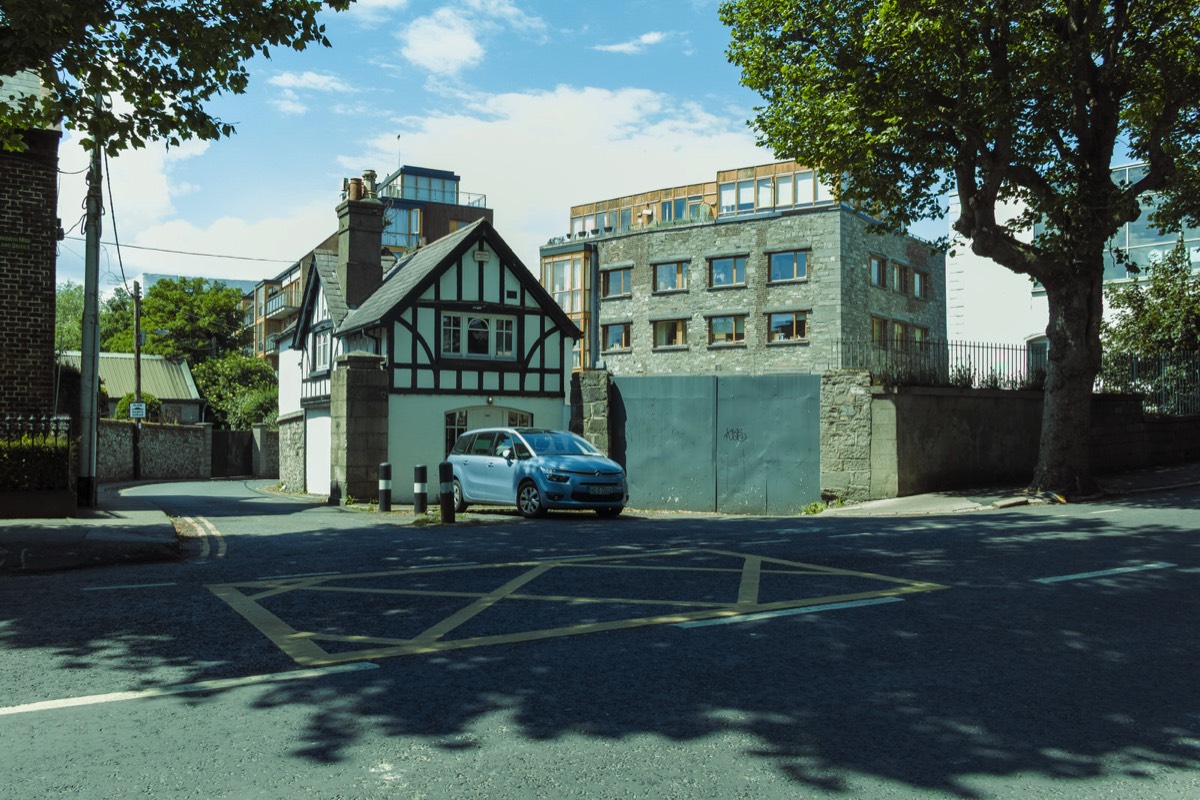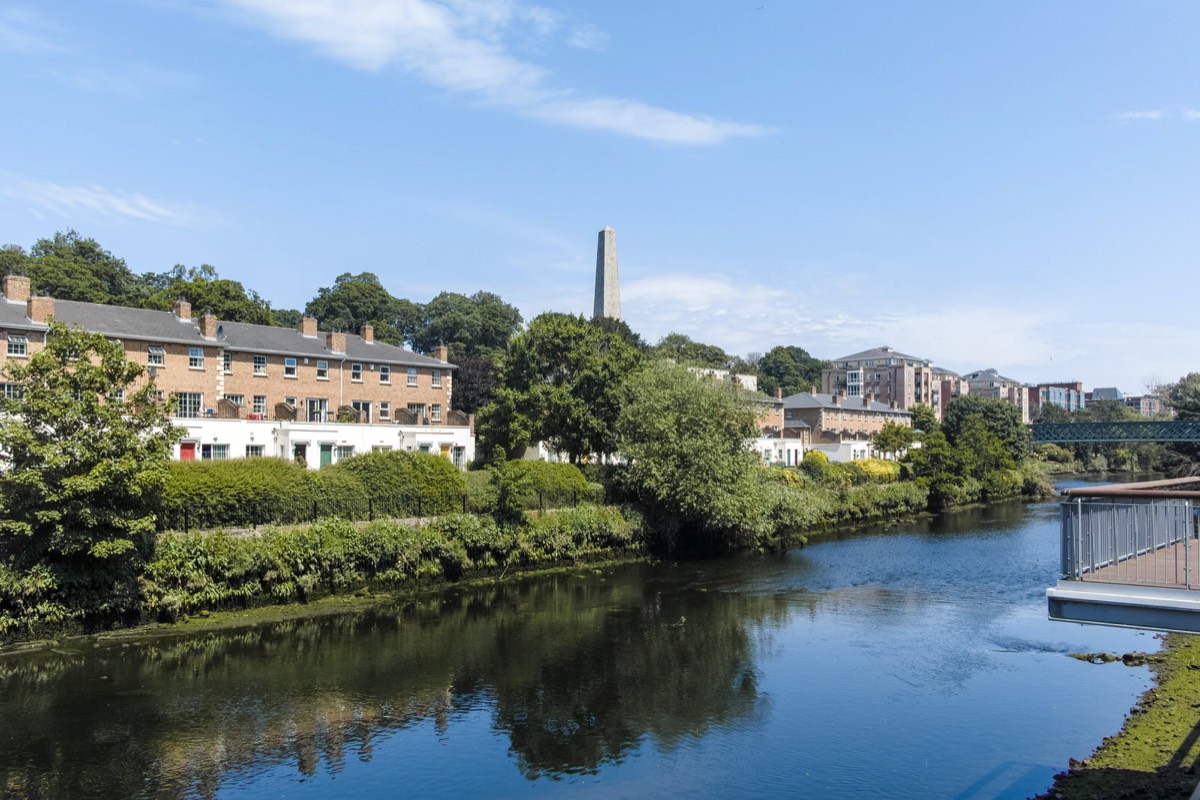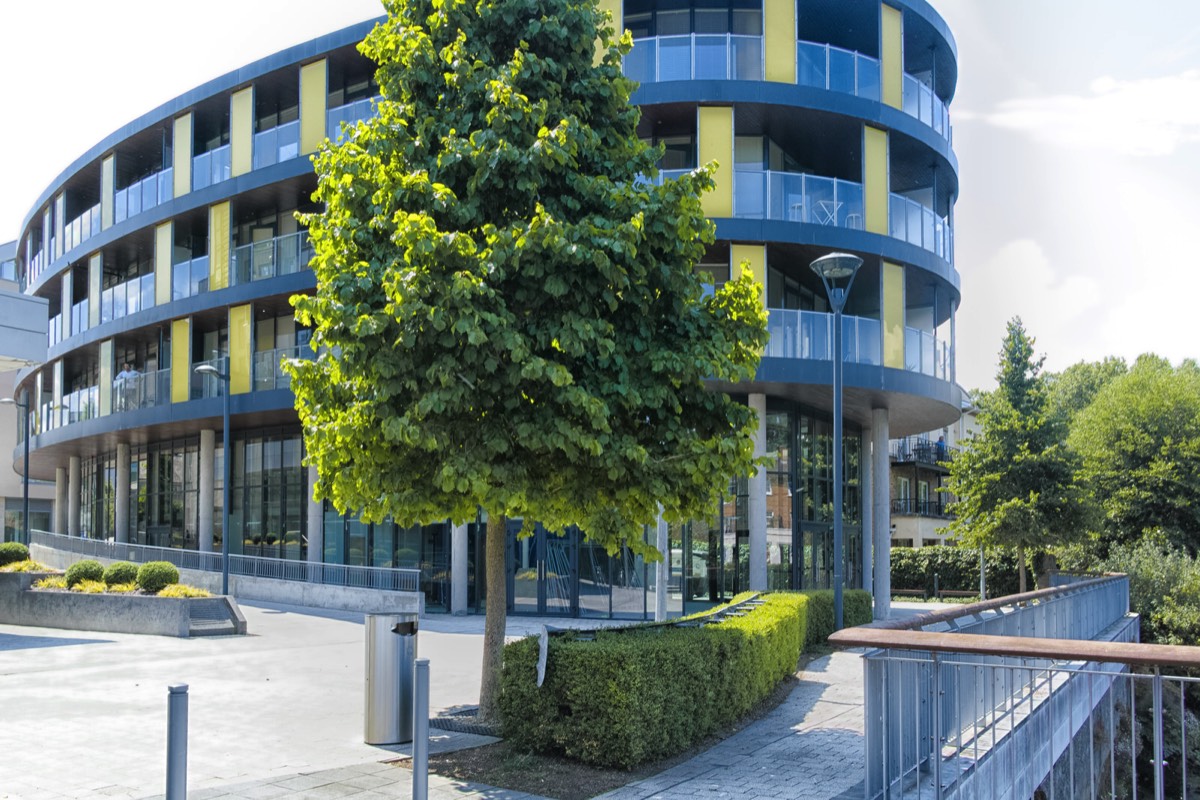ISLAND BRIDGE ALSO THE CLANCY QUAY APARTMENT COMPLEX
Island Bridge [Sarah Bridge], at 38 metres in length, was the longest span masonry arch bridge in Ireland until the Lucan Bridge was built.
The bridge in my photographs connects the South Circular Road to Conyngham Road on the north bank of the river. Elegantly resting on a base of hewn mountain granite, the piers, cornice and balustrades of Island Bridge are of Portland stone. The single elliptical arch is crowned with an ornamental iron railing set firmly in a plinth.
Island Bridge and the surrounding area are so named because of the island formed here by the creation of a mill race towards the right bank while the main current flows to the left. The River Camac emerges from a tunnel further downstream towards Dublin Heuston railway station.
When opened to the public in 1792, construction having begun in 1791, it was known as Sarah Bridge, for Sarah Fane, Countess of Westmorland. According to current accounts it became a favourite spot for professional artists and was favourably compared with Venice’s Rialto Bridge. Designed by architect, engineer and mason Alexander Stevens. It originally featured tall lamp standards.
Sarah Bridge replaced Sidney’s Bridge or Island Bridge, which itself had replaced an earlier stone structure swept away in 1545, which in turn had replaced an earlier crossing which may have been a simple structure of stone or wood.
For some time following the opening of Sarah Bridge, the old bridge, built in 1577, was visible but in a derelict state until it was removed in 1793.
Sarah Bridge was financed by the Corporation for Paving and Lighting of Dublin, with funding directly from Parliament and from taxes. Having suffered and paid for the embarrassment of a false start under an indifferent and most likely corrupt builder, it was necessary to borrow to complete the bridge and by the turn of the 19th century a debt of £12,000 was still outstanding.
Although damaged by a flood in 1813, the bridge has withstood the test of time. The bridge was renamed Island Bridge in 1922 following Irish independence.
Clancy barracks was located on the south side of the River Liffy. Constructed in 1798 and originally known as Islandbridge Barracks, the site was renamed in 1942 after Peader Clancy killed during the War of Independence in 1920. The complex was sold in 2001 for commercial development.
In June 2013 A Californian-based investment group, Kennedy Wilson, became a major player in the Dublin apartment letting market when it purchase a “distressed” development of 420 residential units on the site of the former Clancy Barracks at Islandbridge, Dublin.
The bridge in my photographs connects the South Circular Road to Conyngham Road on the north bank of the river. Elegantly resting on a base of hewn mountain granite, the piers, cornice and balustrades of Island Bridge are of Portland stone. The single elliptical arch is crowned with an ornamental iron railing set firmly in a plinth.
Island Bridge and the surrounding area are so named because of the island formed here by the creation of a mill race towards the right bank while the main current flows to the left. The River Camac emerges from a tunnel further downstream towards Dublin Heuston railway station.
When opened to the public in 1792, construction having begun in 1791, it was known as Sarah Bridge, for Sarah Fane, Countess of Westmorland. According to current accounts it became a favourite spot for professional artists and was favourably compared with Venice’s Rialto Bridge. Designed by architect, engineer and mason Alexander Stevens. It originally featured tall lamp standards.
Sarah Bridge replaced Sidney’s Bridge or Island Bridge, which itself had replaced an earlier stone structure swept away in 1545, which in turn had replaced an earlier crossing which may have been a simple structure of stone or wood.
For some time following the opening of Sarah Bridge, the old bridge, built in 1577, was visible but in a derelict state until it was removed in 1793.
Sarah Bridge was financed by the Corporation for Paving and Lighting of Dublin, with funding directly from Parliament and from taxes. Having suffered and paid for the embarrassment of a false start under an indifferent and most likely corrupt builder, it was necessary to borrow to complete the bridge and by the turn of the 19th century a debt of £12,000 was still outstanding.
Although damaged by a flood in 1813, the bridge has withstood the test of time. The bridge was renamed Island Bridge in 1922 following Irish independence.
Clancy barracks was located on the south side of the River Liffy. Constructed in 1798 and originally known as Islandbridge Barracks, the site was renamed in 1942 after Peader Clancy killed during the War of Independence in 1920. The complex was sold in 2001 for commercial development.
In June 2013 A Californian-based investment group, Kennedy Wilson, became a major player in the Dublin apartment letting market when it purchase a “distressed” development of 420 residential units on the site of the former Clancy Barracks at Islandbridge, Dublin.









As an Amazon Associate I earn from qualifying purchases
You will find links to buy products from Amazon, Google and other partners. If you click on these links, you’ll find that the URL includes a small extra piece of text which identifies that the click came from my websites. This text is an affiliate code, and it means that I get a small percentage of the money you spend if you choose to buy that product, or, in some cases, other products from the site soon after. These affiliate links help pay the costs of producing my websites and ensure that the content is free to you.